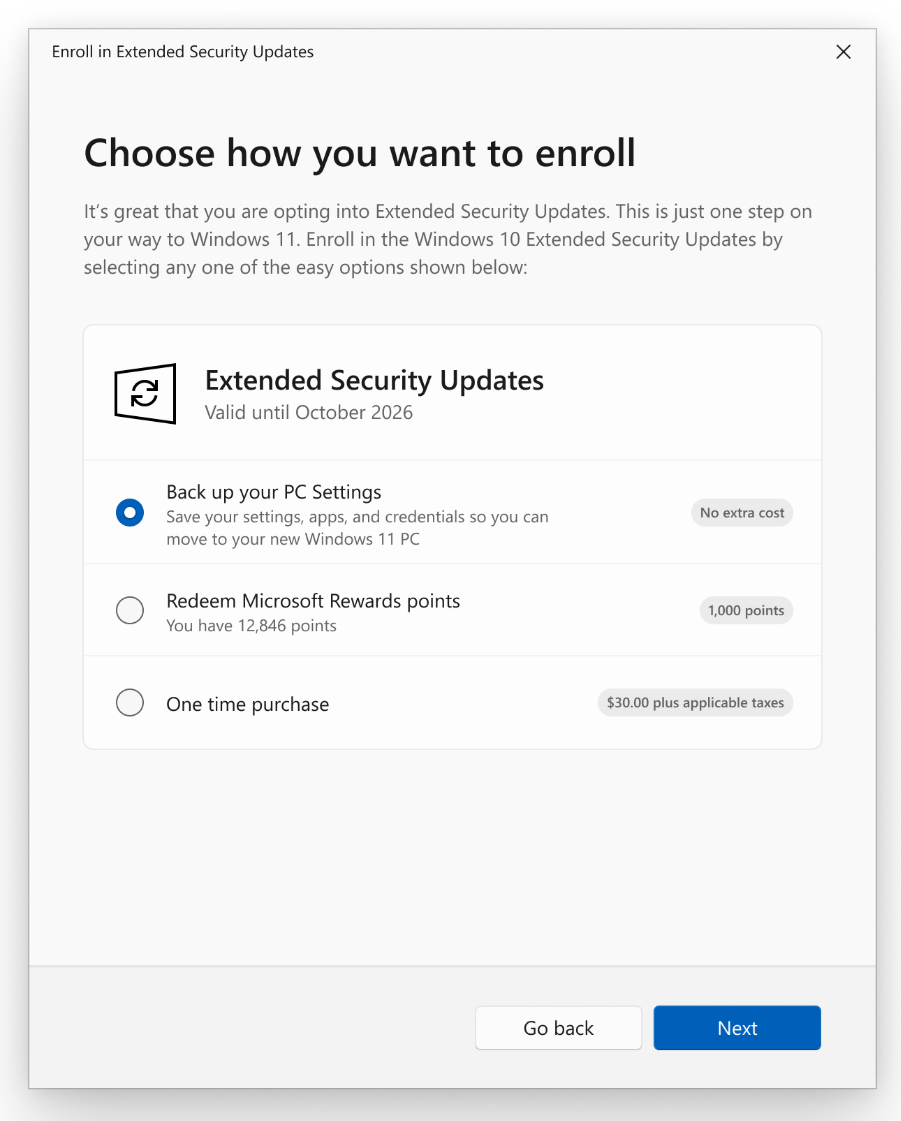- Регистрация
- 17 Февраль 2018
- Сообщения
- 38 920
- Лучшие ответы
- 0
- Реакции
- 0
- Баллы
- 2 093
Offline
But it's not as easy as it once was: to sign up, you'll have to ditch your local account.

Image: Ralf Liebhold / Shutterstock.com
Microsoft has made a big deal of the fact that Windows 10 moves out of support this October. Yet it continues to offer Windows 10 users more and more options to remain on the platform.
The most recent addition is buried in a Microsoft support document, as unearthed by Windows Central: Signing up for Microsoft’s Windows 10 Consumer Extended Security Updates (ESU) program now nets you ten licenses to continue using Windows 10, and not just one machine.
Granted, not every user will own more than one PC. But the new expansion allows a family or extended family of Windows 10 users to keep using Windows 10 for another year. Otherwise, Windows 10 supports runs out this October.
Buying into the ESU program will allow you to receive extended security updates through Oct. 13, 2026, which buys you another year’s grace period to use Windows 10. And there are now three ways to do so:
All three options will appear if you choose to enroll in the ESU, an option which will be given to you if your PC meets the requirements — namely being currently up to date and enrolled in Windows 10 22H2 and signed into a Microsoft account. If you visit the Windows Settings > Windows Update menu, you should see all of the options, including a prompt just to automatically join the ESU if your PC is already backing up its settings.

Microsoft’s ESU screen, as shown off by Microsoft.
As Windows Central notes, the Microsoft account requirement appears to be new, and applies to all three ESU options. (Microsoft says that if you’re signed into a local account, “you will be prompted to sign into your Microsoft account.”) When Microsoft holds both the carrot and the stick, it can apply each how it wishes.
Related:

Mark has written for PCWorld for the last decade, with 30 years of experience covering technology. He has authored over 3,500 articles for PCWorld alone, covering PC microprocessors, peripherals, and Microsoft Windows, among other topics. Mark has written for publications including PC Magazine, Byte, eWEEK, Popular Science and Electronic Buyers' News, where he shared a Jesse H. Neal Award for breaking news. He recently handed over a collection of several dozen Thunderbolt docks and USB-C hubs because his office simply has no more room.
Recent stories by Mark Hachman:

Image: Ralf Liebhold / Shutterstock.com
Microsoft has made a big deal of the fact that Windows 10 moves out of support this October. Yet it continues to offer Windows 10 users more and more options to remain on the platform.
The most recent addition is buried in a Microsoft support document, as unearthed by Windows Central: Signing up for Microsoft’s Windows 10 Consumer Extended Security Updates (ESU) program now nets you ten licenses to continue using Windows 10, and not just one machine.
Granted, not every user will own more than one PC. But the new expansion allows a family or extended family of Windows 10 users to keep using Windows 10 for another year. Otherwise, Windows 10 supports runs out this October.
Buying into the ESU program will allow you to receive extended security updates through Oct. 13, 2026, which buys you another year’s grace period to use Windows 10. And there are now three ways to do so:
- Absolutely for free, provided you’re using Windows Backup to sync your PC’s settings;
- By paying $30 to Microsoft directly;
- Or by redeeming 1,000 Microsoft Rewards points.
All three options will appear if you choose to enroll in the ESU, an option which will be given to you if your PC meets the requirements — namely being currently up to date and enrolled in Windows 10 22H2 and signed into a Microsoft account. If you visit the Windows Settings > Windows Update menu, you should see all of the options, including a prompt just to automatically join the ESU if your PC is already backing up its settings.

Microsoft’s ESU screen, as shown off by Microsoft.
As Windows Central notes, the Microsoft account requirement appears to be new, and applies to all three ESU options. (Microsoft says that if you’re signed into a local account, “you will be prompted to sign into your Microsoft account.”) When Microsoft holds both the carrot and the stick, it can apply each how it wishes.
Related:
- Upgrading Windows 10 to Windows 11: everything you need to know
- Use 0Patch to avoid Windows 10’s end-of-life conundrum

Mark has written for PCWorld for the last decade, with 30 years of experience covering technology. He has authored over 3,500 articles for PCWorld alone, covering PC microprocessors, peripherals, and Microsoft Windows, among other topics. Mark has written for publications including PC Magazine, Byte, eWEEK, Popular Science and Electronic Buyers' News, where he shared a Jesse H. Neal Award for breaking news. He recently handed over a collection of several dozen Thunderbolt docks and USB-C hubs because his office simply has no more room.
Recent stories by Mark Hachman:
